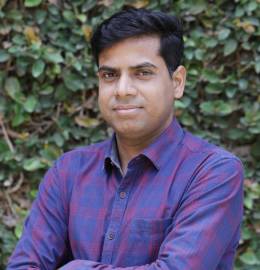Prof. Gopal Das from IIMB features among world’s top 2% researchers for single year impact in study conducted by Stanford University scientists

The selection of the study, published by Elsevier, is based on the top 100,000 by c-score (with or without self-citations) or percentile rank of 2% or above
02 November, 2021, Bengaluru: Professor Gopal Das, faculty from the Marketing area and Chairperson, Institutional Review Board (IRB) of IIMB, has been featured among the top 2% researchers in the world for single year impact, as per a study conducted by scientists from Stanford University. The selection in the study, published by Elsevier, is based on the top 100,000 by c-score (with or without self-citations) or percentile rank of 2% or above.
For the study, a publicly available database of over 100,000 top-scientists was created that provides standardized information on citations, h-index, co-authorship adjusted hm-index, citations to papers in different authorship positions and a composite indicator. Separate data has been included for career-long and single year impact. Metrics with and without self-citations and ratio of citations to citing papers are also mentioned. Scientists have been classified into 22 scientific fields and 176 sub-fields. Field- and subfield-specific percentiles have also been provided for all scientists who have published at least five papers.
Prof. Gopal Das from IIMB features among world’s top 2% researchers for single year impact in study conducted by Stanford University scientists
The selection of the study, published by Elsevier, is based on the top 100,000 by c-score (with or without self-citations) or percentile rank of 2% or above
02 November, 2021, Bengaluru: Professor Gopal Das, faculty from the Marketing area and Chairperson, Institutional Review Board (IRB) of IIMB, has been featured among the top 2% researchers in the world for single year impact, as per a study conducted by scientists from Stanford University. The selection in the study, published by Elsevier, is based on the top 100,000 by c-score (with or without self-citations) or percentile rank of 2% or above.
For the study, a publicly available database of over 100,000 top-scientists was created that provides standardized information on citations, h-index, co-authorship adjusted hm-index, citations to papers in different authorship positions and a composite indicator. Separate data has been included for career-long and single year impact. Metrics with and without self-citations and ratio of citations to citing papers are also mentioned. Scientists have been classified into 22 scientific fields and 176 sub-fields. Field- and subfield-specific percentiles have also been provided for all scientists who have published at least five papers.
